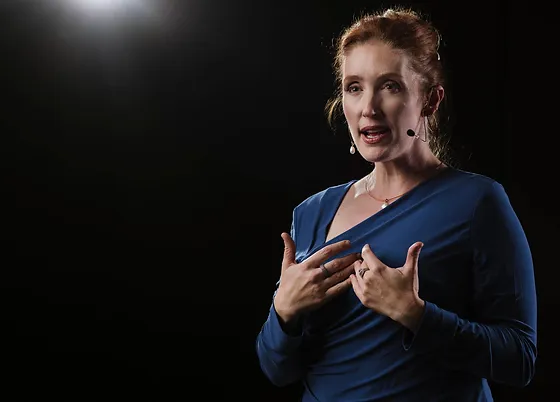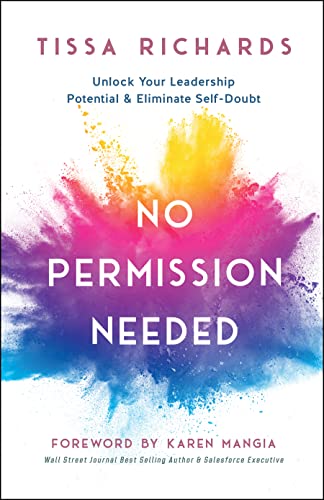Written by Tissa Richards
Keynote Speaker | Leadership Expert | Corporate Trainer | Executive Coach | Board Director | Bold, Authentic & Trusted
Tissa Richards is one of the small group of women who have founded and funded technology startups in Silicon Valley. Today, top executives and companies trust Tissa to help them articulate their compelling stories to get hired and stand out.
As a keynote speaker, leadership consultant, coach and bestselling author, Tissa guides her audience on how to be crystal clear about their value and helps executives and founders develop leadership skills and launch companies.
Tissa also works passionately to increase the presence of women on corporate boards and remove gender as a perceived barrier to success by mentoring founders, entrepreneurs and aspiring board directors.
When I ask leaders to answer the question, “Who are you?” I usually hear a long—very long—description of what they do. And when I say long, I’m not kidding. I’ve clocked these introductions at an average of three and a half minutes and up to seven minutes at times! Many people include a list of accomplishments, job titles, and companies where they’ve worked.
It goes something like this…
“I’m Sarah. I do this. I previously did that, and I was also at this company, managing this project. I report to that person. I have this skill. Oh, I’ve also done this and this. Did I forget to mention my role at company XYZ? I’m really hoping to do this, which is why I do this, and I’m really passionate about this other thing too …”
This is one of the most common leadership challenges I help executives with: clearly identifying their value proposition.
I know you’ve probably been advised at some point to have an elevator pitch at the ready. But these pitches are so generic, so long, so unfocused, so … boring.
Even when someone manages to be brief, it’s rare when they successfully answer the question, “Why you?”
But something truly transformative happens when you can clearly define and communicate the value you bring:
- Other people recognize and compensate you for it
- You can deal with challenging situations
- You become more resilient
- You lead your team more effectively
The trouble is, many people find it hard to figure out their value proposition. But it’s easier than you think. You already know it. You just need to surface it.
What Exactly is a Value Proposition?
Your value proposition is what makes you uniquely qualified in your role.
Your value proposition goes beyond the “what” to the “so what?”
It’s what keeps you progressing in your career and earning promotions. It’s what moves you up to the C-suite and into the boardroom. Your value proposition is how you differentiate yourself from other qualified candidates. It’s how you become a memorable thought leader and how you gain credibility. Knowing your value is also key to tackling the challenges of leadership.
Accomplishments and Skills Are Not the Same Thing as Your “Value Proposition”
At this point in your career, you have accomplishments and core skills that are table stakes. But articulating your value goes far beyond reciting what you’ve accomplished. It’s about identifying, articulating, and communicating the “so what” of what you’re good at.
Identifying the “so what” is more strategic than listing the skills required for your role. To do this, you need to roll those skills up to what they’ve helped you accomplish. Then, you’ve got to identify what your accomplishments mean for your stakeholders.
Keep scrolling to read more.
No Permission Needed: Unlock Your Leadership Potential and Eliminate Self-Doubt
BIG CONGRATULATIONS to Tissa for publishing her book. Reading this book is like having Tissa at your side, guiding and encouraging you as you do the work to take your career to the next level.
Description: Are you waiting for your next promotion or to further your leadership career – hoping that others will just recognize your value? Are you avoiding big goals out of fear, low confidence, or lack of clarity? Whether it’s a board seat, starting your own business, a promotion, making a career pivot, you can move forward – on your terms. No permission needed.
Achieve the career you want and deserve, starting today.
When you demonstrate your value with confidence and clarity, you create and fulfill your own opportunities.
Identifying Your Stakeholders Helps You Identify Your Value Proposition
Your stakeholders encompass a wide spectrum. They include the people who work for you, the people you work for, your investors, partners, customers, and your board. Anyone you interact with and who is impacted by your work is a stakeholder. Can you identify the highest value you bring to your stakeholders?
To do this, think about the skills you have and what they’ve helped you accomplish. Now, go beyond that and ask yourself: what has this helped me accomplish for my stakeholders?
An Example: My Skills as a Founder & CEO Roll Up to a Higher-Level Value Proposition
To illustrate how this exercise works in action, I’ll use myself as an example.
I’m a technology founder and CEO who has raised money, productized complex software products, and scaled companies. It takes a wide set of skills to:
- Raise money
- Architect and productize technologies
- Convince customers to buy from an early-stage, nascent company
- Negotiate partnerships with big companies like HPE, Dell, and Intel
- Secure board directors from Dell, AT&T, Intel, Palo Alto Networks, and other big companies
- Secure multiple patents to solidify competitive differentiation and increase company valuation
Delivering value to my stakeholders as a founder and CEO requires those skills. But they aren’t my highest-level value proposition. My higher value proposition aligns with my personal brand and my thought leadership as a speaker and executive trainer and coach.
My Highest Value: Telling the Story of People, Products & Companies to Optimize Outcomes
My value proposition is that I tell the stories of people, products and companies to optimize outcomes. Those outcomes include getting hired, raising money, and securing exit valuations.
I tell the story of people: As a founder and CEO, I recognize and nurture talent. I hire the right people for my companies. As an executive coach, I tell the story of people, so they stand out and get hired. I do that by helping them identify, articulate, and define their value propositions and personal brands
I tell the story of products: I crystalize the value of complex technologies for customers and investors. For customers, I frame the problem we’re solving and the benefits the product brings. For investors, I show how the product solves a market need and why they should invest.
I tell the story of companies: I help identify existing or emerging markets for companies. I help leadership teams scale. I help companies reach high valuations for eventual exits.
Identifying Your Value Proposition
When I do workshops about this topic with large corporations and with individual leaders, most people struggle. It’s not because they don’t have skills and accomplishments. It’s because they aren’t trained to map those skills and accomplishments to powerful value propositions.
And it is indeed a mapping exercise.
I encourage you to think of the “reporter questions” we all learned in elementary school. Ask yourself:
- Who do you bring value to?
- What problems are you solving for them?
- How do you solve those problems?
- Why does it matter?
Brainstorm the answers to those questions. Think about the things you’ve accomplished. You have repeatedly accomplished them for your stakeholders. You have solved similar problems. You have done it in a unique way.
The most important question to answer is, “why does it matter?”
This is the “so what?” What value is that driving for your organization or industry? Answering these questions is the magic formula:
- Why does what you do matter?
- What is the outcome when you deliver your value?
- What problems do you solve?
- What blockers do you remove?
- What growth do you enable?
- How do you drive change or transformation?
- Why do people care about your results? (Which, of course, is another way of asking, “So what?”)

The Secret Voice of Self-Doubt
You might be surprised to learn that many high-level executives harbor a secret voice of self-doubt. I hear about it a lot in workshops and in coaching sessions. “I sometimes feel like I don’t deserve to be in my role.” Or “I’m worried someone is going to find out that I’m actually not that great at anything.” This is imposter syndrome. It’s very easy to create an antidote to imposter syndrome. It takes a bit of work, but it’s not hard.
The antidote is knowing your value.
That’s why I do the value proposition exercise with my executive coaching clients – even if they’ve come to me with different priorities – because it’s a fundamental first step.
Why It’s Critical to Identify, Articulate & Communicate Your Value
It’s critical that you can say with confidence, this is who I am, this is what I do really well, and this is the result. It’s foundational to many other things: leadership development, personal growth, or securing promotions or board roles.
When you know the value you bring and why you deserve a seat at the table, you knock down other leadership challenges like bowling pins.
Your Value is a Fact, Not a Boast
Identifying and communicating your value is only the beginning. You then have to embody it. You have to believe it. You have to present it to the world as a fact. Because it is a fact. You are good at what you’re good at. What you’re good at is what brings value to your organization and your stakeholders.
I’m asked all the time – and I mean all the time – how to be confident without seeming boastful.
Part of this is learning exceptional communication skills and executive presence. A huge part of it is internalizing that your value is factual. You won’t feel boastful if you present it that way, and then follow it up with solid, top-notch delivery.
Knowing Your Value Dissipates Fear and Uncertainty
Leadership challenges are easier to overcome when you know and embody your value.
Many uncomfortable or difficult situations stem from wondering if people accept your credibility or your authority. When your factual value takes up more space in your head than doubt does, that value will start to replace fear and uncertainty.
Can You Articulate Your Own Value Today?
Can you articulate your value today? If you’re unclear, consider doing the value proposition exercise, on your own or with your team or organization. It’s a fun exercise of self-discovery. You’ll realize that the answer is there and always has been. You just haven’t surfaced and identified it yet.
Once you stop shoehorning everything you’ve ever done into a traditional elevator pitch and instead, craft a compelling message that clearly tells people why you matter, you’ll be a more authentic, resilient, and effective leader.





